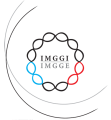Conservation of animal genetic resources using molecular genetic characterization
Ministry of Agriculture, Forestry and Water Management, 680-00-00041/1/2021-02, 2021-2022
Principal Investigator: Dr Jelena M. Aleksic, IMGGE
Participant from IMGGE: Dr. Natasa Kovacevic-Grujicic
Genetic resources in the Republic of Serbia are exceptionally rich and include, among others, about 30 autochthonous breeds of domestic animals that represent our cultural and intangible heritage. Their preservation is one of the strategic goals of the Republic of Serbia, which therefore determines a part of the budget funds as subsidies for breeders to maintain autochthonous breeds of domestic animals. The aim of this project is to improve the system of conservation of animal genetic resources in Serbia, through the introduction of modern methodology of molecular genetic characterization, which will enable the improvement of breeding programs and transition to genetically-informed and planned management of animal genetic resources in Serbia. A multidisciplinary team of 12 experts from 4 renowned scientific institutions, dealing with molecular genetics, animal husbandry and veterinary medicine, will use busha cattle, which is one of the two autochthonous breeds of cattle in Serbia, as a model for improving the system of conservation of animal genetic resources. We will carry out genetic characterization of up to 400 busha cattle using 30 nuclear microsatellites, which is in line with FAO recommendations, as well as their morphological characterization, by measuring 14 morphological characteristics. The obtained data will be used to formulate guidelines and recommendations for the management of genetic resources of the busha cattle based on clearly defined genetic parameters, which will be used by the Main Breeding Organization to improve breeding programs for busha cattle in Serbia. In this way, the state will be able to provide breeders, after providing subsidies for the maintenance of animal genetic resources, with guidelines for their further management, which include recommendations for introducing selected genotypes in herds in order to preserve the genetic integrity of the breed/strain, and for increasing levels of genetic diversity and reducing inbreeding. Today, these activities are left to the breeders themselves, and therefore, despite their tendency to reduce the inbreeding in their herds, they can still be characterized as stochastic. Therefore, this project will contribute to raising the system of conservation of animal genetic resources in our country to a qualitatively completely new level, which is in line with modern trends that are applied today in Europe and the world. The project represents a major step forward in this area, and contributes to the improvement of livestock and agriculture in Republic of Serbia.


